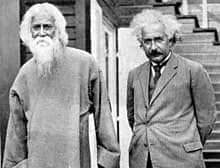
Boshi had met Albert Einstein on two successive days (18th and 19th November 1930) and spent about 75 minutes with him discussing science and philosophy. The Einstein couple were very cordial with him and gifted him an autographed picture.
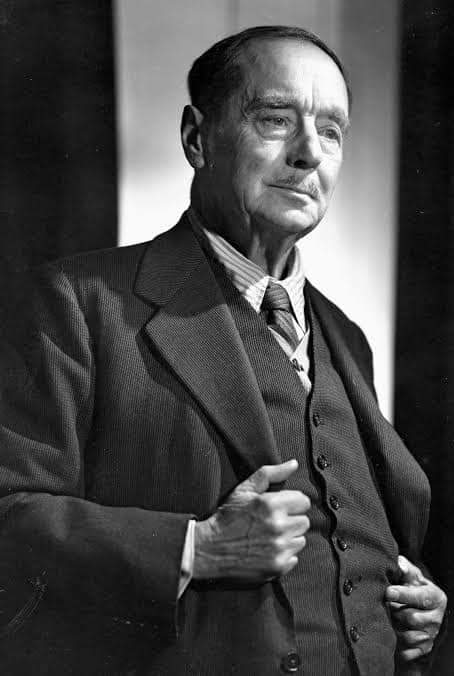
Boshi and Gertrude had a long association with Tagore. Boshi, of course knew him and interacted with him closely throughout his years of apprenticeship with J.C. Bose as Tagore and Bose were closest friends. And it was Tagore who had advised her to stay in an Indian village. Later, around 1930, when Tagore was staying as the guest of the Elmhirsts at their New York apartment, Gertrude was invited for lunch. Upon her arrival she learnt that Albert Einstein and his wife were also expected for tea. Tagore and Einstein had met earlier in 1926 in Berlin and this was their second meeting. The two giants of the twentieth century had an interesting discussion which Gertrude tape-recorded and later published in the ‘Asia.’ Gertrude had also been present during the meeting between Tagore and eminent author H.G. Wells, and also during the meeting of Tagore and Romain Rolland, and she published the notes of these meetings too.
In 1938, Tagore visited Almora and stayed for a week with them. He had boarded a train from Calcutta and crossing the entire Gangetic plains alighted in Bareilly at an ungodly hour. Even at that time the local journalists had got a sniff of his arrival and swarmed upon the already exhausted man. With difficulty he took a car to Almora and after a hot bath and a glass of warm milk, seated himself in a big easy chair for two hours to regain his composure. The Poet, then over 75, had clearly retained his mind-boggling creative levels during his week-long stay. He woke up at five in the morning and told his hosts at the breakfast table that he had already composed two songs and written a poem by that time. His son and rest of the family arrived later and found a suitable house for their stay, and took a while to have the great man’s room ready. After moving to stay with his family Tagore would come to the ‘Kundan House’ once in a while to relish the ice-cream there which he thought was incomparably superior to the stuff he was served in Bengal. The chair on which he used to occupy himself got to be called the ‘Tagore chair’ in the couple’s circle. It was a centre of attraction.
As told in the earlier section, Boshi received Watumull fellowship in 1946-47, which enabled Gertude and him to visit several universities in the United States. He visited and worked in New York, Princeton, Cornell, and Texas. The couple wanted to reach India just before the historic day of 15th August 1947 and had to rush through to make it in time. Getrude would also see Gandhi for one last time, the meeting fixed by Sarojini Naidu. Gandhi displayed his usual jovial self but Gertrude could not help feeling a tremendous underlying dismay within him at the events leading to and after the partition; Gandhi, with all his efforts for Hindu-Muslim unity for decades, was witnessing the saddest days just at the fag end of his heroic life.

In the late 1920s Boshi had come to know that Romain Rolland, the French Nobel Laureate and a great European conscience-keeper, was working on a biography of Sri Ramakrishna and Vivekananda. He wrote to him telling Rolland that he knew most of the direct disciples of Sri Ramakrishna and offered his help in any ways possible. Rolland cordially invited him to his place at Montreaux in Switzerland. After the conversation that lasted for more than five hours, Boshi left with Rolland the unpublished memoirs of Sister Christine to help him in his understanding of Vivekananda.
The Sens had a long and warm friendship with Jawaharlal Nehru. They had met Nehru for the first time in Calcutta in 1934. He was then recently released from Jail and expressed concern that he might be arrested soon again, which actually happened. During their first meeting itself a good rapport was established which lasted all their lives. Nehru contributed to the ‘Asia’ magazine a few times, writing pieces like ‘India can learn from China’ and serialising his ‘Letters from a Father to his Daughter.’

Nehru had been imprisoned in Almora Jail during 1945. On the day of his release he visited the Sen House and spent the night there. Seeing books on their shelves he remarked how good it felt to be again in the surroundings of books. Very interestingly, many British officials living in Almora contacted the Sens asking to be invited for the evening so that they could meet Nehru. Officially, of course, Nehru was His Majesty’s adversary, but these English people of Almora knew that they had a person in their midst much taller in stature and an important player in the making of history than they themselves, who were at best only witnesses to history.
After independence, Boshi and Gertrude were frequent guests at the Teen Murti Bhavan – Nehru’s residence, and Boshi often employed his skills as a masseur to give Nehru a relaxing massage. The Sens had also stayed at the ‘Anand Bhavan’ – the ancestral home of the Nehrus in Allahabad.
While being friendly at a personal level with Nehru and Indira Gandhi, the Sens never sought to promote themselves in any way. They were too noble to act in any way unbecoming of the highest standards they had always maintained for themselves. In the sixties when Congress wanted Boshi to accept a nomination to the Rajya Sabha, he straightaway declined saying that venturing into that field then would be like taking a second wife at that age. He was fully clear what his life’s vocation was.

Another Nobel Laureate Pearl S. Buck (having the distinction of being the first American woman to have received the Nobel Prize for Literature) had been a close friend of Gertrude. She wrote the Introduction for the revised American edition of Gertrude’s book ‘Voiceless India.’ Pearl was one of Gertrude’s earliest and dearest friends. She visited them at their Bosepara home in Calcutta, and also later at Almora. Later her husband acquired the ‘Asia’ magazine from the Elmhirsts.
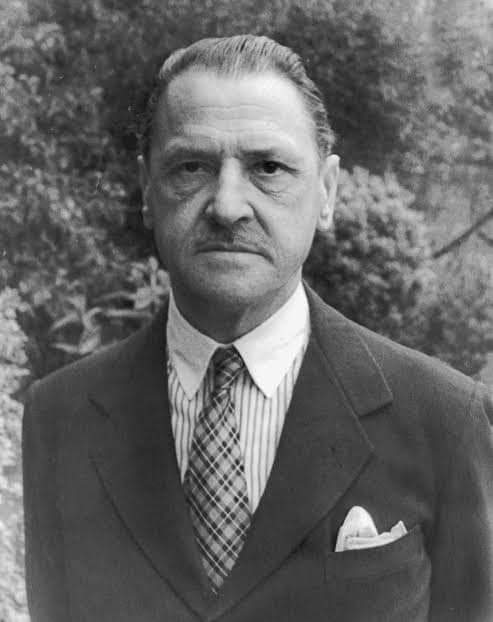
When he was writing his celebrated book ‘Razor’s Edge,’ the eminent author Somerset Maugham visited India to get a first-hand idea of what a spiritually enlightened person might be like. He came to Calcutta in March 1938 and spent an evening with the Sens whom he had known before. Maugham discussed with Boshi aspects of Hindu philosophy and religion during this visit. Boshi gave him a copy of Vivekananda’s ‘Rajayoga’ and Maugham later wrote that he had read it with great interest. Boshi also suggested to Maugham to meet Mahamahopadhyay Pandit Gopinath Kaviraj, the great Indian savant, a world authority in the study of the Tantras, based in Varanasi.
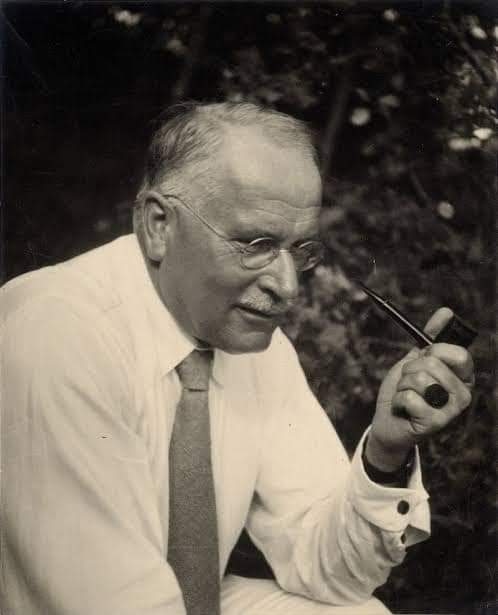
Boshi was also friends with the eminent psychoanalyst and psychiatrist Carl Gustav Jung. The Swiss psychologist was once seen by Sigmund Freud as his worthy successor but later broke away from the Freudian school of thought laying down his own tradition known as ‘Analytical Psychiatry.’ Boshi had first met Jung in 1930. Thereafter, the two met on several occasions both in India and the West. Boshi discussed with him the Vedantic and Yogic perspectives, and the place of mental process in traditional Indian Psychology. Jung also wrote for the ‘Asia’ magazine and also for the ‘Prabuddha Bharata,’ the journal of the Ramakrishna Order founded by Vivekananda himself in 1897.
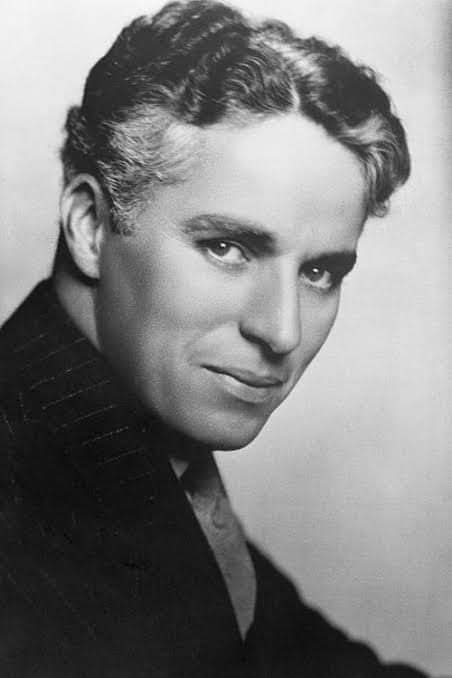
In a dinner Boshi had in Europe, he shared his table with, among several eminent persons, the super-celebrity Charles Chaplin. But Boshi was never one to be swept off his feet or make much of the fame and celebrity of who he met.

The couple also had as their good friend the world renowned Violinist Zlatko Balokovic, who had also visited their Almora home. The Croatian-born celebrated musician did a lot of work during the Second World War and donated a large part of his fortune, amounting to millions of dollars, to help those who suffered at the hands of the Axis Powers.
In 1935 Almora had also become the home for an internationally famous couple Earl Henry Brewster and his wife Aschah Brewster, both artists of great accomplishment. They were American-born but had lived all over the world before making Almora their final nest. They were greatly influenced by the French artist Puvis De Chavennes, who is said to have given to France a ‘National Art.’ The couple had spent many years living in France, Italy and Greece. They had together brought out a study on the defining influences and principles of their art titled ‘Le Ouevre E.H. et Aschah Barlow Brewster.’
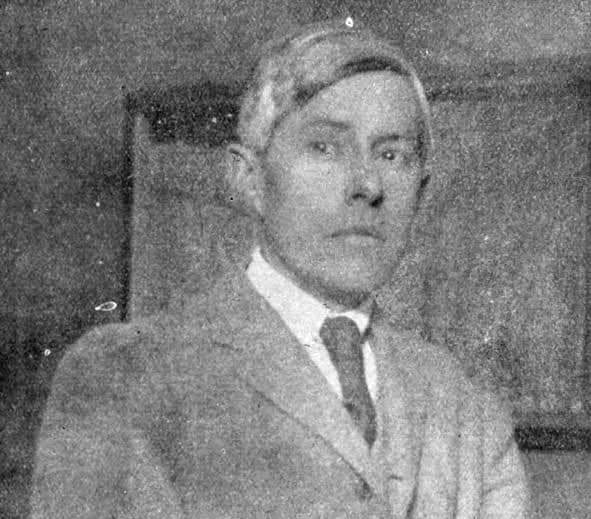
E.H. Brewster was a polymath – he was a painter of worldwide acclaim, a scholar and an author. Besides several famous paintings he had also authored a Life of Gautama Buddha, a book which used a lot of original material in Pali, an enterprise in which he was encouraged and mentored by the great scholar of Buddhism and Pali, Caroline Rhys Davis. E.H. Brewster also wrote an important volume on his close friend, the celebrated author D.H. Lawrence – ‘Correspondence and Reminiscences of D.H. Lawrence.’
The Brewsters were close friends of Boshi and Gertrude and also had many internationally famous people, particularly interested in Buddhism, visiting them. They were close to Jawaharlal Nehru whose drawing-room was adorned by a Breswter painting. It is interesting to note that they were first attracted towards India through Theosophy, followed by an intense engagement with Buddhism, and later came to develop interest in the Vedanta philosophy, in which, one imagines the intellectual companionship of Boshi would have played no insignificant a role.
Aschah passed away in 1945, while Earl lived till 1957 in Almora only. In the celebrations following the Independence of India, Earl was given the honour by local townsmen to hoist the National Flag in a public ceremony.
In fact, unbeknownst to many people even of today’s generation in Almora, there was a time in the middle of the past century that the area near the famous temple of Kasardevi, which was also a place where Swami Vivekananda had visited and done Tapasya (spiritual practices) a large number of foreigners – artists, spiritual seekers, hippies of different persuasions including those busy composing and playing music and living by drugs, had come. This area was called the ‘Crank’s Ridge.’ Among some famous persons who visited and stayed here were the Tibetian Buddhist mystic Anagarikara Govinda – born Ernst Hoffman in Germany, writer John Blofeld – an authority on Taoism and Chinese Buddhism, American writer Walter Ecans-Wentz who also wrote the preface for the classic ‘Autobiography of a Yogi’ by Paramhamsa Yogananda, Danish mystic Alfred Sorenson, American poet Alan Ginsberg, psychedelic drug Guru Timothy Leary, and even a contemporary world super-celebrity – Nobel Prize winning songwriter-composer-singer Bob Dylan. In fact, the Crank’s Ridge had built for itself a formidable reputation of being a major nodal point of counter-culture of the 60s.
There also lived in Almora a very gentle Jewish couple – Freddie Guthman, an Argentine pilot who had the distinction of being one of the first to fly over the Pacific in a small plane and his Russian wife. They were fairly young and looked upon Boshi and Gertrude as their local guardians.

Boshi was also responsible for the setting up of the Uday Shankar Centre in Almora, a cultural landmark in the area. Uday Shankar, who was a pupil of Tagore’s friend William Rothenstein, had been studying painting in London, but gave up that art-form and devised his own style of dance and choreography based on Indian themes. He stormed the European and Ameican stage in the 1930s and 40s, first with celebrated Russian dancer Anna Pavlova, and later making his own troupe. He also took his younger brothers with him, including the youngest Rabindra, who after training rigorously under Ustad Allauddin Khan of Maihar, became the world celebrity Ravi Shankar, the first great ambassador of Indian Classical Music in the West.
By early 1940s, Uday Shankar was planning to have an institution of his own somewhere in India where he could train his pupils and prepare them for international performances throughout the world. He too had as his benefactor Leonard Elmhirst and his wife Dorothy Straight who were impressed by his work. Dorothy’s daughter, Beatrice, too was a keen member of Uday Shankar’s group (Beatrice Straight later became an eminent theatre actress and occasionally worked in films, later winning the Academy Award for ‘Best Actress in a supporting role.’) The Elmhirsts entrusted the task of scouting for a suitable piece of land to Boshi who recommended a nice property in Almora which was an abandoned tea-garden and helped them acquire the same.
The Centre was a success as long as it lasted. Among Uday’s pupils in Almora were youngsters like Guru Dutt and Zohra Sahgal, acclaimed artists in their later lives. Uday had to close down the centre and later carried his work with his wife Amala Shankar, still continued by their daughter Mamata Shankar – actress and dancer in the Uday Shankar tradition.
Boshi and Gertrude were very close friends of Prasanta Chandra Mahalanobish and his wife Rani Mahalanobis. Mahalanobis, a highly talented applied scientist who had studied in Presidency College Calcutta and subsequently at Cambridge, is widely regarded as the architect of Nehruvian Planning which was largely followed till the sweeping reforms of 1991. He had also founded the world-class Indian Statistical Institute in Calcutta and pioneered large sample statistical studies. The Mahalanobis couple were very dear to Tagore too who was almost a father-figure to them. It was Mahalanobis who advised and helped Boshi first to write a grant proposal to the government in 1930s which got the Vivekananda Laboratory its first grant of Rs 2500.
There were a few special persons in their life at Almora. One was Ram Maharaj, who lived at the local Ashram of the Ramakrishna Order. This monk was very dear to both, and was like their friend, philosopher and guide in his own simple ways. He took a meal once a week at the ‘Kundan House.’ The Swamis of the Ramakrishna Order visiting the area used to meet Boshi and see his work. They regarded Boshi as their own brother.
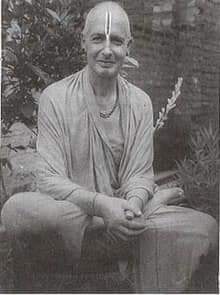
A very close person to the two was Yogi Krishnaprem who lived in Mirtola ashram, about eighteen miles from Almora. Krishnaprem had been Ronald Nixon in his earlier life and served as Royal Air Force pilot during the First World War. He once had a miraculous escape during the war when surrounded by enemy planes in a completely hopeless situation he heard in his mind clear instructions from a voice guiding him with directions and bringing him back to a safe landing. This incident changed him completely. He wrapped up his work in Britain and shifted to India to inquire into deeper mysteries of life in this ancient land. He joined the Lucknow University as a Professor of English and went through a phase familiarizing himself with India and her traditions. For some time he had also taught at the Banaras Hindu University and was associated with Pandit Madan Mohan Malviya. He was profoundly impressed by the deep spiritual life of the Vice-chancellor G.N. Chakrabarty’s wife, Monika Devi, who became his mentor. Incidentally as a young girl in Ghazipur (a town located near the Ganga in the eastern part of Uttar Pradesh) Swami Vivekananda, then a wandering monk, had stayed with her family and performed the ritualistic worship called the ‘Kumari Puja’ of her. Smt. Chakrabarty took vows of renunciation in the Vaishnava from Vrindavan and came to be known as Yashoda Ma. Nixon too followed suit and talking his vows settled in Almora district at Mirtola calling the ashram ‘Uttar Vrindavan.’ A number of seekers got attracted by Krishnaprem and accepted him as their mentor.
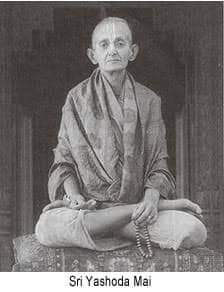
Krishnaprem lived a very austere life for four decades at that place immersed in his inner life. Among his close friends and admirers were Dilipkumar Roy, the eminent singer-composer and disciple of Sri Aurobindo, who also wrote a biography of his titled ‘Yogi Krishnaprem’ and published by the Vidya Bhavan, founded by eminent writer, lawyer and freedom-fighter K.M. Munshi. K.M. Munshi along with Sardar Patel had also impressed upon Prime Minister Nehru that the Central Government fund at least a part of the new Somnath Temple and that will be a living, active temple as a Jyotirlinga and not a site handed over to the Archaeological Survey of India, something that Nehru had first seemed to suggest.
Incidentally, Munshi himself was a good friend of Boshi and Gertrude. As a student in Baroda College he had been taught by Sri Aurobindo (then Aurobindo Ghose) who had advised him to study the works of Vivekananda. In independent India he became the Governor of Uttar Pradesh. His daughter wanted to become a nun in the Sarada Math – the women’s Order of the Ramakrishna-Vivekananda movement. Munshi was first much dismayed and wanted Boshi to talk to his daughter and make her change her mind. To this Boshi replied saying that she was only pursuing the ideals and goals that Munshi himself had for long only talked and wrote about. Munshi’s daughter came to be known as Pravajika Atmaprana, who founded the Ramakrishna Sarada Mission at Hauz Khas in Delhi and authored a biography of Sister Nivedita that is considered to be the most definitive biography of that dynamic western disciple of Swami Vivekananda. She passed away in 2018.
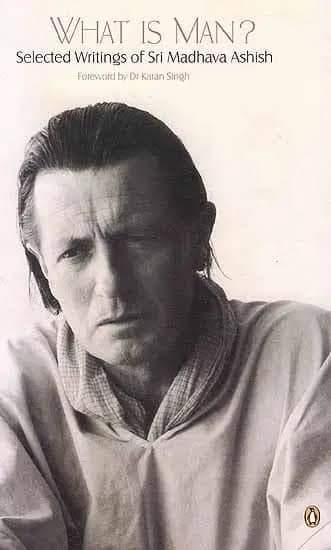
Along with Yogi Krishnaprem the Sens were also close to the former’s disicple, Sri Madhava Ashish. Born Alexander Phipps in Edinburgh, Scotland, he had served in the World War II and that brought him to India. He had a transforming meeting with Sri Ramana Maharshi, the sage of Arunachalam, and that made him seek his inner goals in India. After the departure of Yogi Krishnaprem from plane of mortal existence, Sri Madhava Ashish steered the Mirtola Ashram. He authored several books and even while being Vaiahnava monk he made significant efforts in space of agriculture to make the ashram sustainable, and one might surmise that in this enterprise he was helped and advised by Boshi. Sri Madhava Ashish also received the Padma Shri for his services.
▶Next Chapter: In the Evening of Their Lives